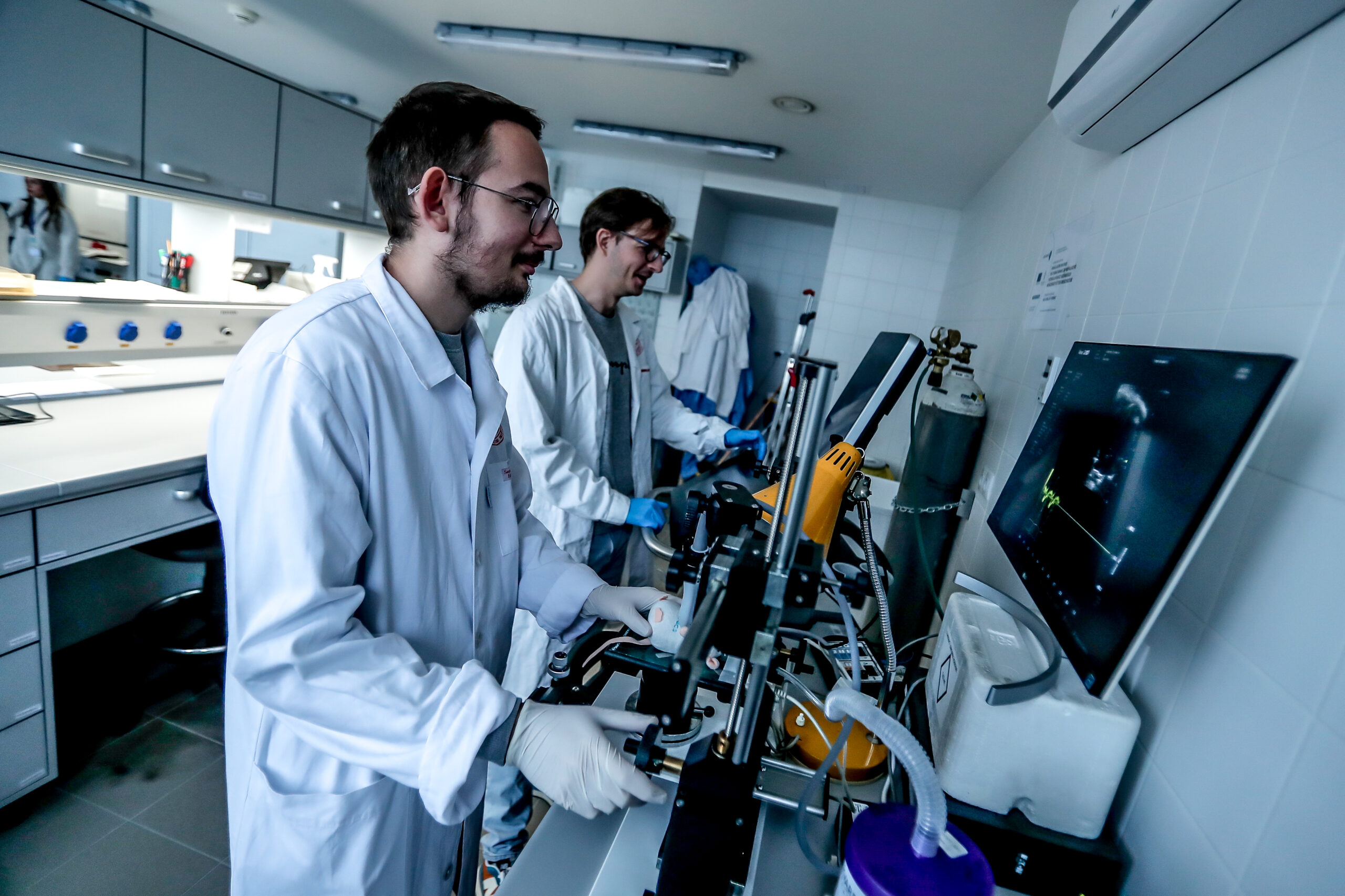| Grant: | Tématerületi Kiválósági Program 2021 |
| Amount of support: | 332.500.000 HUF |
| Duration: | 2021.08.01-2025.12.31 |
| Principal investigator: | Péter Ferdinandy, MD, PhD, DSc, MBA |
Summary
For decades, our institute has been at the international forefront of research into ischemia/reperfusion myocardial injury in the presence of comorbidities. We were the first to show that hyperlipidemia impairs myocardial stress adaptation.
Inflammatory processes play a central role in the development and progression of cardiovascular disease. Heart failure with preserved ejection fraction (HFpEF) is typically caused by the presence of several cardiometabolic comorbidities, such as diabetes, obesity, and hypertension. Although modulation of inflammation in oncological therapies is successful, the enhanced immune response to immune checkpoint inhibitory anticancer therapies may accelerate atherosclerosis and increase cardiovascular risk. Therefore, we aim to investigate the inflammatory mechanisms in in vitro hypercholesterolemic cell culture models, in vivo HFpEF animal models, and human cardiac tissue samples.
Our research also tests new cardioprotective molecules, including RNA therapeutics, which have significantly progressed in recent years. We have previously identified cardioprotective non-coding microRNAs as drug candidates. Analysis of microRNA-mRNA networks can reveal cardiac ischemia/reperfusion injury following myocardial ischemia, remodeling, and transcriptome changes. This unbiased omics approach is key to identifying novel regulators of cardioprotection. Our study aims to identify hypercholesterolemia-induced miRNA pathway alterations by unbiased network analysis.
Participating leading researchers, collaboration partners, universities, companies
The project is led by Péter Ferdinandy, MD, PhD, DSc, MBA, Director of the Department of Pharmacology and Pharmacotherapy at Semmelweis University, Deputy Rector for Science and Innovation. The project will use samples collected and stored in the Heart Transplant Biobank of the Heart and Vascular Research Center (VSZÉK) of Semmelweis University. Among the staff of VSZÉK, Prof. Béla Merkely, Rector of Semmelweis University, and Dr. Tamás Radovits, habilitated associate professor, are the main contributors to the research. We also collaborate with the Department of Genetics, Cell and Immunobiology, and the Department of Biophysics at Semmelweis University.
Applied methods and tools
An in vitro hypercholesterolemia cell culture model will be established. We investigate the response to inflammatory stimuli in the presence/absence of hypercholesterolemic supplementation in a human monocyte cell line (THP1-ASC-GFP). We will analyze the changes in the expression of immune checkpoints and the effect of their inhibitors on cell phenotype. A mouse model of HFpEF will be induced by a high-fat diet and nitric oxide synthase inhibition in C57BL/6J mice, followed by treatment with anti-PD1 or control antibody and echocardiography to assess cardiac function, with particular attention to hypertrophy and diastolic dysfunction.
The effect of the identified microRNAs will first be tested in vitro on cardiac myocytes, and then the tissue distribution and clearance of potentially protective microRNAs (protectomiR) will be investigated in vivo in animal models. The complex effects of protective microRNAs on target RNAs will be examined by qPCR, digital droplet PCR, and RNA in situ hybridization.
Pictures
Mission and benefits
We aim to investigate inflammatory processes in the development and progression of cardiovascular disease and identify hypercholesterolemia-induced miRNA pathway alterations in various in vitro and in vivo models. The main general objectives of the proposal are:
- to facilitate the clinical translation and commercialization of novel therapeutic research and development projects,
- to support international excellence: to maximize the involvement and funding of national and foreign PhD students and young researchers through the support of MD-PhD and the facilitation of participation in the Cooperative PhD program,
- maintenance of core facilities and acquisition of new equipment in synergy with the plans to establish the SE Science Park.


